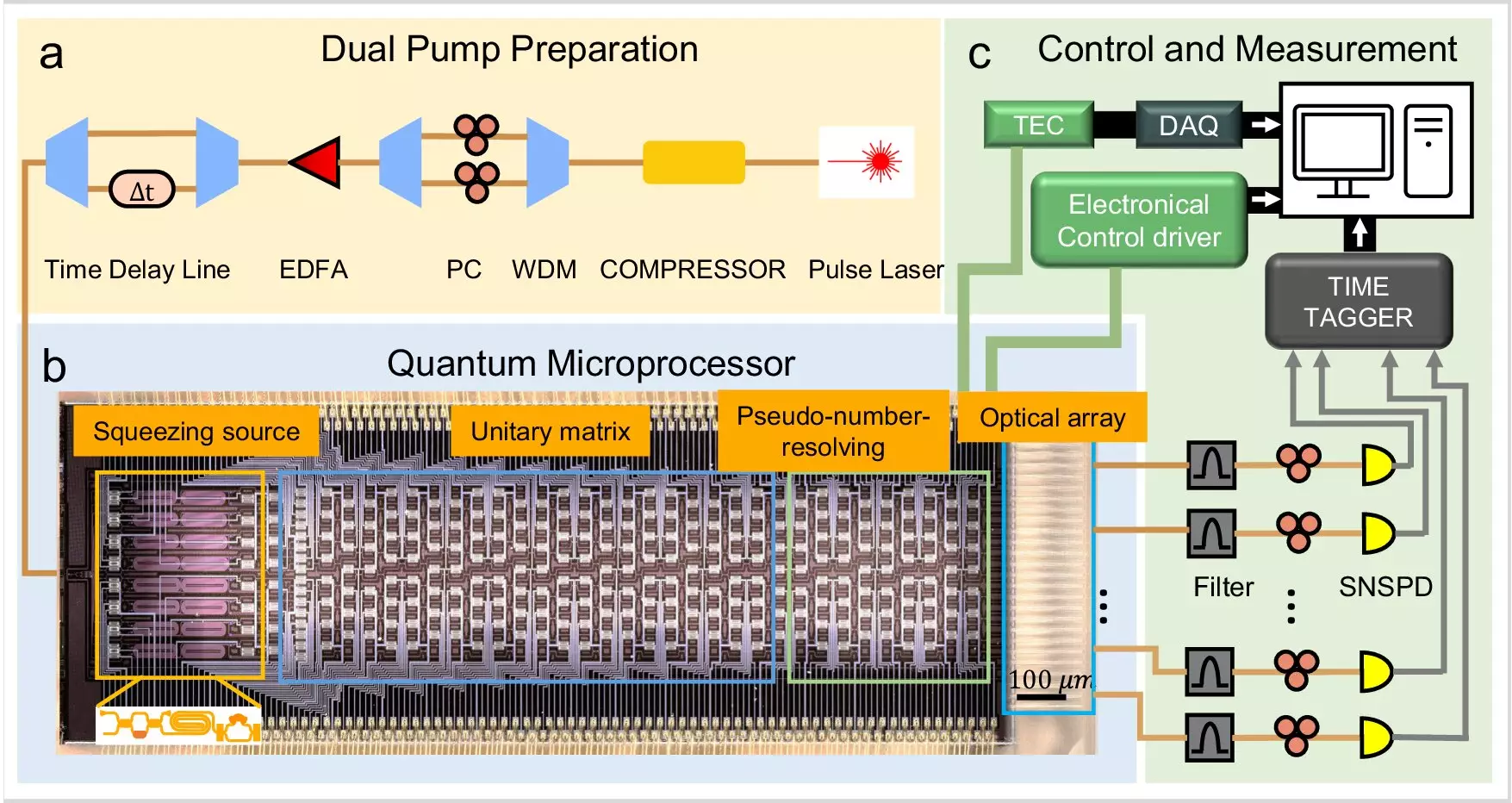Quantum simulation has emerged as a revolutionary technology, enabling researchers to investigate complex systems that classical computers struggle to process. By leveraging the unusual properties of quantum mechanics, such as superposition and entanglement, scientists can tackle challenging problems across various domains, including finance, cybersecurity, pharmaceuticals, and artificial intelligence. One particularly intriguing application is the study of molecular vibronic spectra, which plays a crucial role in molecular design and analysis. Historically, simulating these spectra posed an insurmountable challenge for conventional supercomputers, necessitating the development of specialized quantum algorithms and hardware.
A noteworthy advancement in quantum simulation was showcased by a team of engineers at The Hong Kong Polytechnic University (PolyU). Their innovative work led to the creation of a quantum microprocessor chip capable of simulating molecular spectroscopy for complex, large-structured molecules. This achievement, which represents a first in its class, signifies a substantial leap in our ability to model systems that were previously beyond reach.
The departure from traditional methods to this new technology not only enhances accuracy but also mitigates challenges associated with noise in quantum computations. This breakthrough offers new tools for highly accurate simulations, thereby pushing the boundaries of quantum chemistry and its applicability to real-world problems.
The crux of the PolyU research lies in their development of a sophisticated quantum microprocessor chip that integrates various components into a single unit. This 16-qubit chip employs a linear photonic network intertwined with squeezed vacuum quantum light sources, which allows for efficient simulation of molecular vibronic spectra. The meticulous engineering behind the chip involves advanced packaging techniques for optical, electrical, and thermal components, coupled with a comprehensive software package that includes user interfaces and programmable quantum algorithms.
Dr. Zhu Hui Hui, the project’s main driver, emphasized the significance of their theoretical model, which incorporates various design elements aimed at maximizing the chip’s performance. Their approach has successfully overcome some of the traditional limitations faced by quantum computing, allowing for simulations that operate at speeds and accuracies far exceeding those possible with classical systems.
The implications of this breakthrough reach far beyond molecular spectroscopy. Quantum microprocessors, like the one developed by Dr. Zhu’s team, hold promise for a broad spectrum of applications, including complex protein folding simulations and advanced molecular reaction optimizations. Professor Liu Ai-Qun, a leading figure in the research, noted that these simulation technologies could lead to practical insights and solutions that are currently unattainable.
Moreover, the integration of quantum microprocessors into fields such as material science and condensed matter physics opens doors to new research avenues. As quantum technologies continue to evolve, the potential for enhanced quantum information processing becomes increasingly valuable, signaling a transformative phase in computational science.
Looking ahead, the research team at PolyU intends to scale their quantum microprocessor further, tackling increasingly intricate molecular simulations and exploring additional industrial applications. The combined expertise of collaborators from various global institutions, including Nanyang Technological University and the Chalmers University of Technology, underscores the collaborative spirit driving this innovative field.
The advancements in quantum microprocessors signify a paradigm shift not just in theoretical research but also in practical applications across diverse industries. As quantum simulation technologies continue to mature, we can expect a ripple effect of advancements, enabling solutions to pressing challenges in healthcare, environmental science, and beyond.
By challenging traditional computational limits, the pioneering work at PolyU exemplifies the transformative potential of quantum simulation technologies in shaping the future of scientific inquiry and industrial applications, thereby illustrating a promising avenue for addressing complex real-world problems. As research progresses, the potential benefits for society and industry become ever clearer, heralding a new era in computational science that transcends the capabilities of current technologies.

